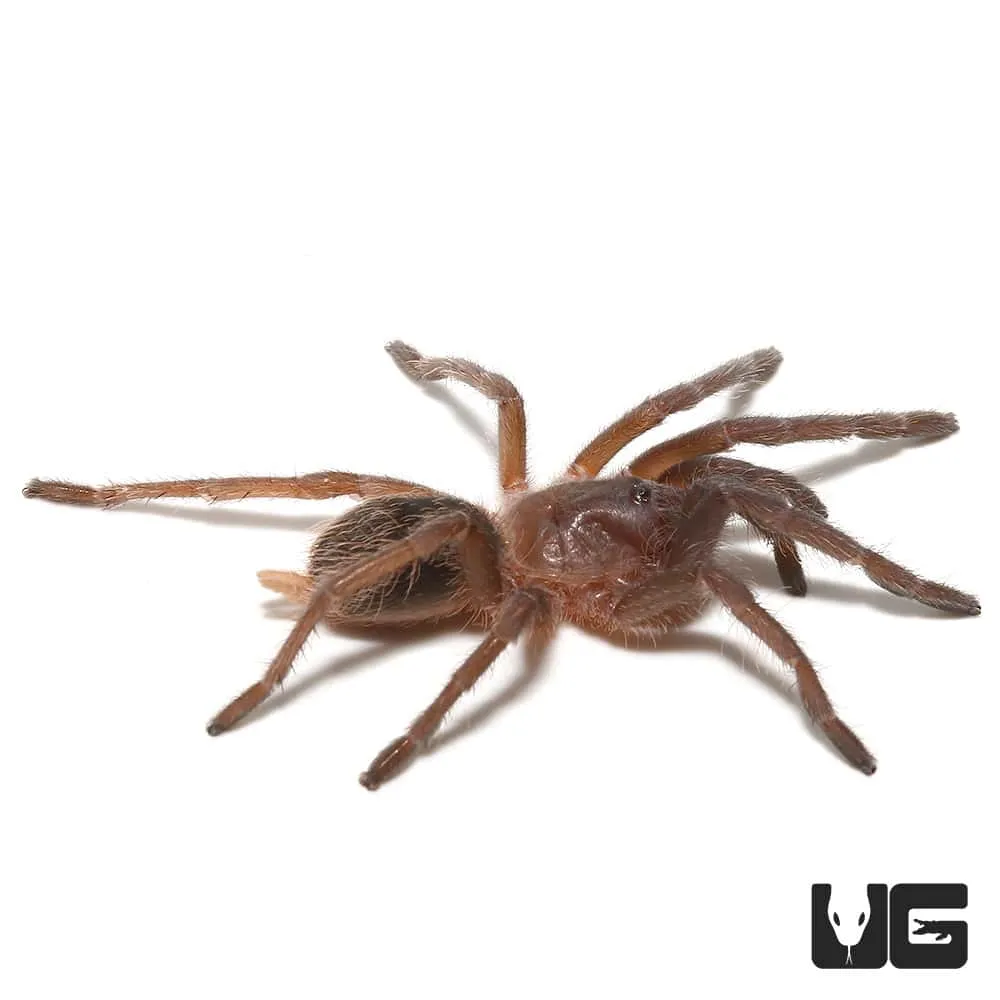Stripe Knee Tarantula Overview
The Stripe Knee Tarantula (Aphonopelma seemanni) is a captivating species that has gained popularity among exotic pet enthusiasts. Known for its striking black and white striped legs, this tarantula is relatively docile and makes a fascinating addition to any home. Before diving into the specifics of caring for a Stripe Knee Tarantula, it’s essential to understand its basic characteristics and origins. This will provide a solid foundation for creating an environment where your pet can thrive.
Appearance and Characteristics
The defining feature of the Stripe Knee Tarantula is, of course, its legs. The alternating black and white bands create a visually appealing pattern that gives this species its name. They are medium-sized tarantulas, with females typically reaching a leg span of up to 6 inches. Their bodies are covered in fine hairs, and they possess chelicerae, which are used for injecting venom and manipulating food. These tarantulas are generally considered to be relatively calm, making them a good choice for those new to tarantula ownership, but it’s important to respect their space and understand their potential defensive behaviors.
Origin and Habitat
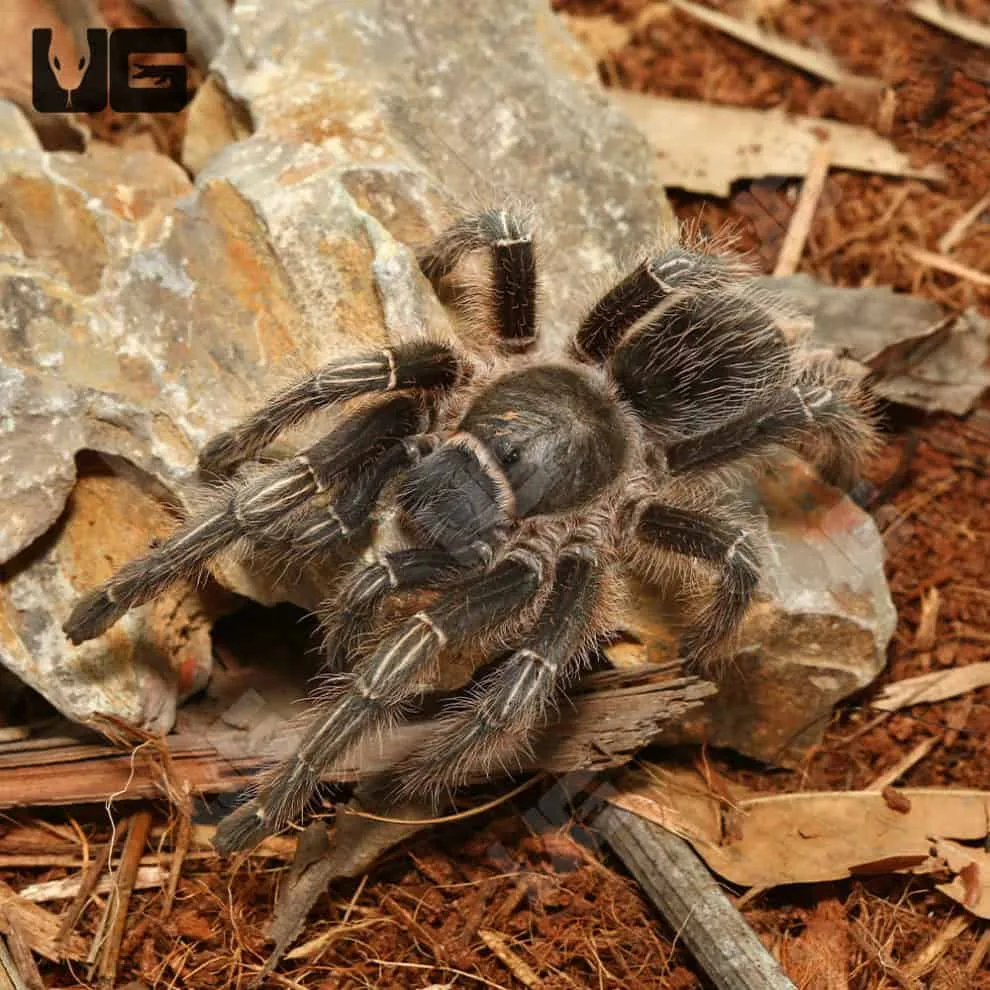
Native to Central America, specifically Costa Rica and Nicaragua, Stripe Knee Tarantulas thrive in a tropical climate. They are terrestrial spiders, which means they live on the ground, often seeking shelter in burrows or under rocks and logs. Understanding their natural habitat is crucial for replicating the conditions they need to survive in captivity. This includes providing the right temperature, humidity, and substrate to mimic their natural environment as closely as possible. These creatures are very adaptable, but providing the right setup is important to ensure they thrive.
Top 5 Stripe Knee Tarantula Care Tips
Caring for a Stripe Knee Tarantula is a rewarding experience. By following these top 5 care tips, you can ensure your tarantula lives a long, healthy, and happy life. Proper care involves understanding their specific needs and providing an environment that allows them to thrive. From enclosure setup to feeding and handling, these tips cover the most crucial aspects of tarantula care.
Enclosure Setup
The enclosure is the tarantula’s home, so it’s crucial to get it right. A well-designed enclosure provides security, comfort, and the essential environmental conditions the tarantula needs to survive. Consider the size, substrate, and decorations when setting up the enclosure. Always ensure the enclosure is escape-proof to prevent your tarantula from wandering outside of its habitat. This will also make it easier to ensure the correct levels of heat and humidity are met.
Choosing the Right Tank
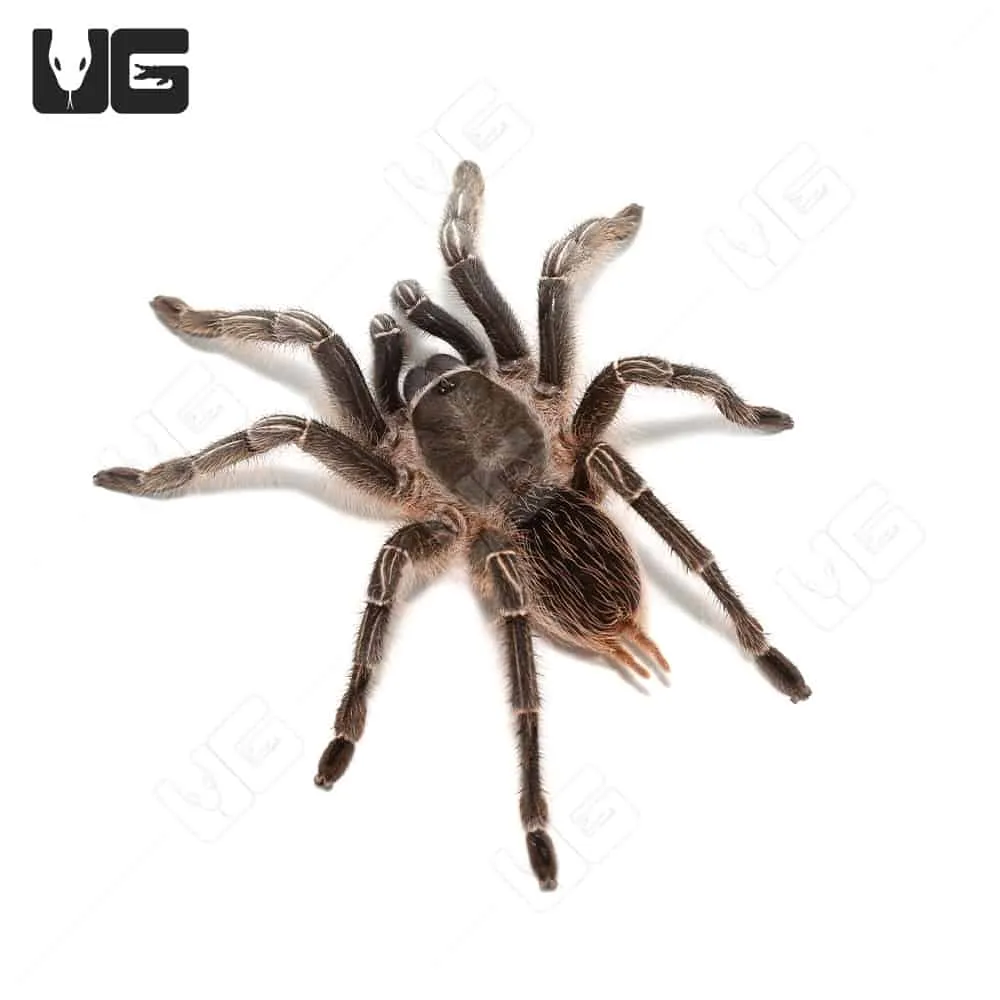
A glass or plastic terrarium is ideal. The size of the enclosure should be appropriate for the size of your tarantula, providing ample space for movement and burrowing. A general guideline is to provide a tank that is at least three times the tarantula’s leg span in width and length. Make sure the tank has a secure lid to prevent escapes. Ventilation is also important; the enclosure needs air circulation to prevent mold growth and maintain the correct humidity levels.
Substrate and Decor
The substrate is the bedding material in the enclosure. It should be several inches deep to allow the tarantula to burrow. A mixture of coconut fiber, peat moss, and a small amount of vermiculite is often recommended as it helps retain moisture and provides a naturalistic environment. Decorate the enclosure with a hide, such as a cork bark or a hollow log, where the tarantula can retreat and feel secure. Include a shallow water dish, and consider adding live or artificial plants for decoration and to help maintain humidity.
Temperature and Humidity
Stripe Knee Tarantulas thrive in a temperature range of 75-85°F (24-29°C). A heat lamp or heat mat can be used to maintain this temperature, but make sure the heat source doesn’t directly touch the enclosure. Humidity should be maintained at around 60-70%. You can measure humidity using a hygrometer. Mist the enclosure with water once or twice a week, or as needed, to maintain humidity levels. Avoid over-misting, which can lead to mold growth.
Feeding Your Tarantula
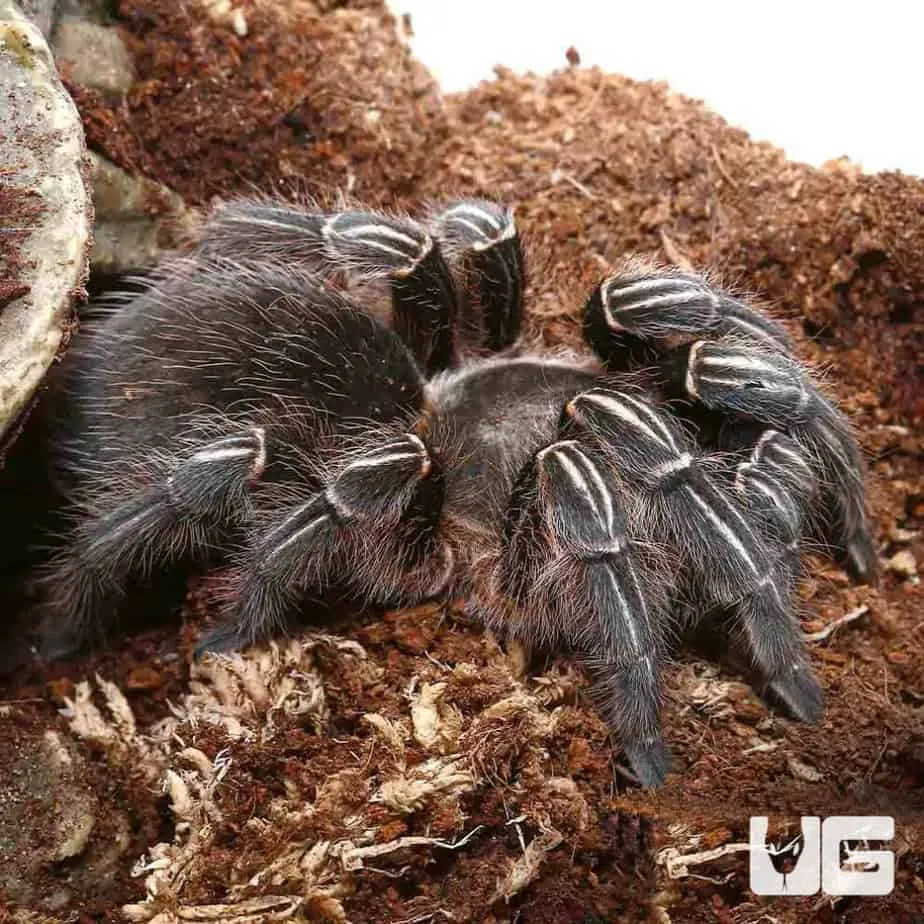
Feeding is one of the most enjoyable parts of owning a tarantula, as it’s when you get to observe their fascinating hunting behaviors. Knowing what and how often to feed your tarantula is key to its health and well-being. They have specific dietary requirements and feeding schedules. Make sure the prey is the right size and type, and always remove any uneaten food to prevent mold or mites.
What to Feed
Stripe Knee Tarantulas primarily feed on insects. Crickets, mealworms, and roaches are all suitable options. The size of the prey should be appropriate for the size of your tarantula – ideally, no larger than the tarantula’s body. You can also offer pre-killed prey if you prefer. Always ensure that the insects are gut-loaded (fed nutritious food) before offering them to your tarantula, as this improves the nutritional value of the meal.
Feeding Frequency
Young tarantulas should be fed more frequently, about once or twice a week. Adult Stripe Knee Tarantulas can be fed less often, typically once every one to two weeks. Adjust the feeding schedule based on your tarantula’s appetite and body condition. If the tarantula is refusing food, it may be molting or simply not hungry. Always remove any uneaten prey within 24 hours to prevent stress and potential health issues.
Watering and Hydration
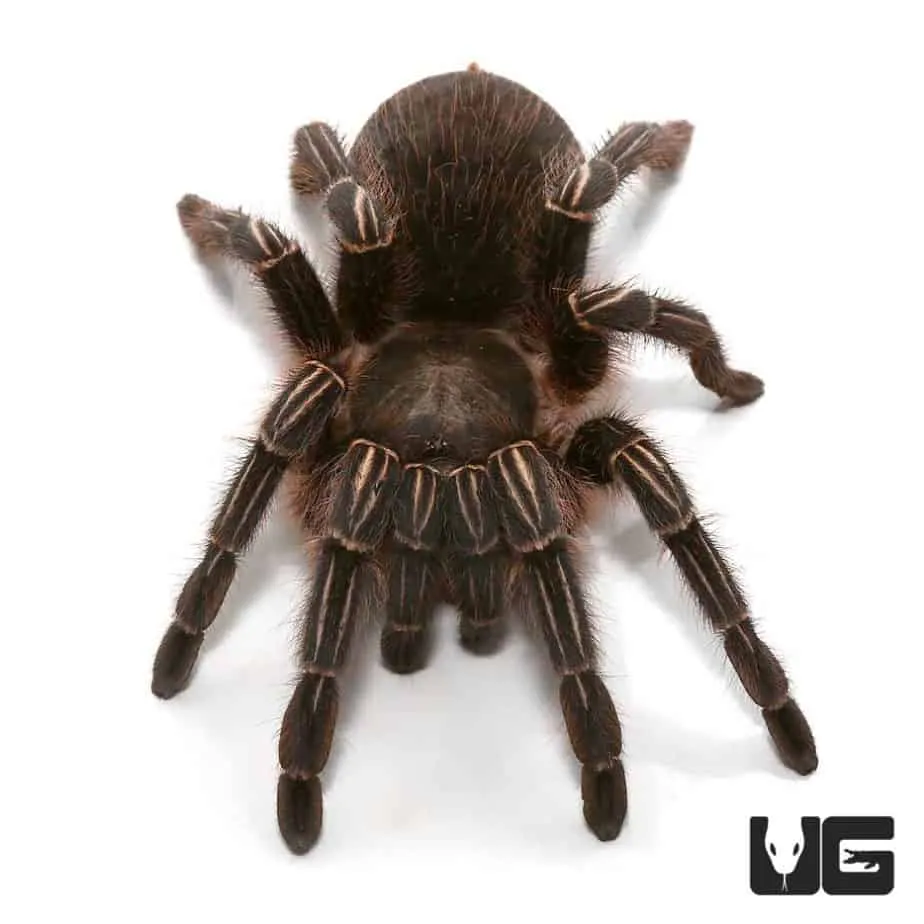
Providing fresh, clean water is essential for your tarantula’s health. It’s also important to maintain the right humidity levels in the enclosure. Regular watering ensures your tarantula stays hydrated and can successfully molt. In addition, the water dish helps regulate the humidity in the enclosure. Always use clean water and regularly check the dish for any contamination.
Providing Fresh Water
A shallow water dish should be provided at all times. The water dish should be easily accessible for your tarantula, and the water should be replaced every few days to ensure it remains clean and fresh. Use a shallow dish to prevent the tarantula from drowning. Consider using a water gel product if the humidity is a concern, as it minimizes the risk of spills.
Maintaining Humidity
The humidity levels within the enclosure should be maintained, as described earlier. Monitor the humidity levels using a hygrometer, and mist the enclosure with water as needed to maintain the proper range. Make sure there is good ventilation to prevent the growth of mold. The substrate should be kept slightly moist but not waterlogged. Regularly check the enclosure to identify any potential problems or changes needed.
Handling and Safety
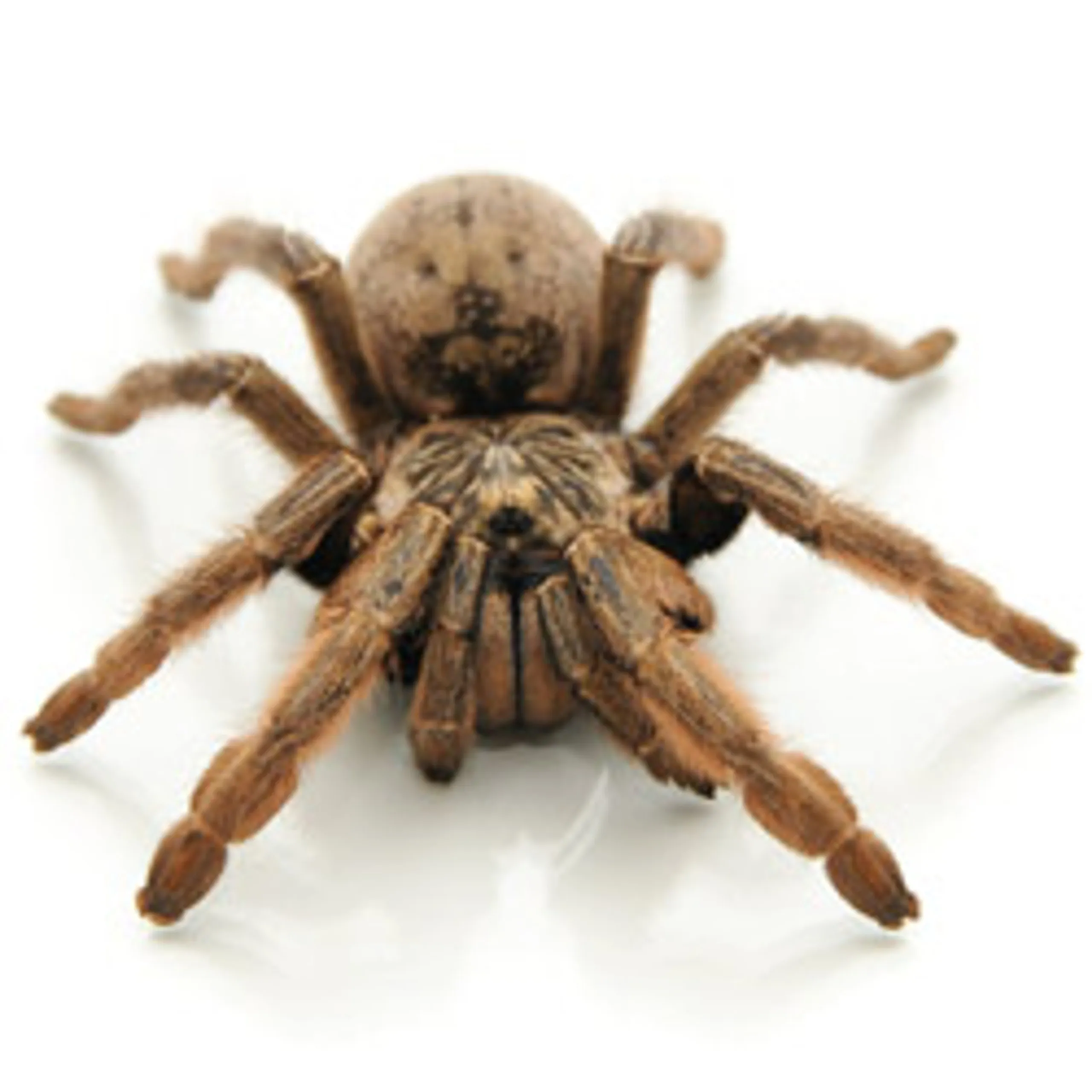
While Stripe Knee Tarantulas are generally docile, handling them should be done with caution and awareness. Understanding tarantula behavior is crucial. They can be unpredictable. Always prioritize your safety and the tarantula’s well-being. Handle your pet only when necessary and learn to recognize signs of stress, such as raising their front legs or flicking hairs.
Safe Handling Practices
Handle your tarantula as little as possible to avoid unnecessary stress. If you need to handle your tarantula, do so close to the ground or over a soft surface to prevent injury if it falls. Gently coax the tarantula onto your hand, and avoid sudden movements. Wash your hands thoroughly before and after handling to avoid transferring any substances. Always be respectful of their space and behavior.
Understanding Tarantula Behavior
Learn to recognize the tarantula’s body language. A defensive posture includes raising the front legs or flicking hairs (urticating hairs) from their abdomen. Avoid any actions that might provoke a defensive response. If the tarantula seems stressed, it’s best to leave it alone. Over time, you’ll become more familiar with your tarantula’s individual personality and behaviors.
Health and Common Issues
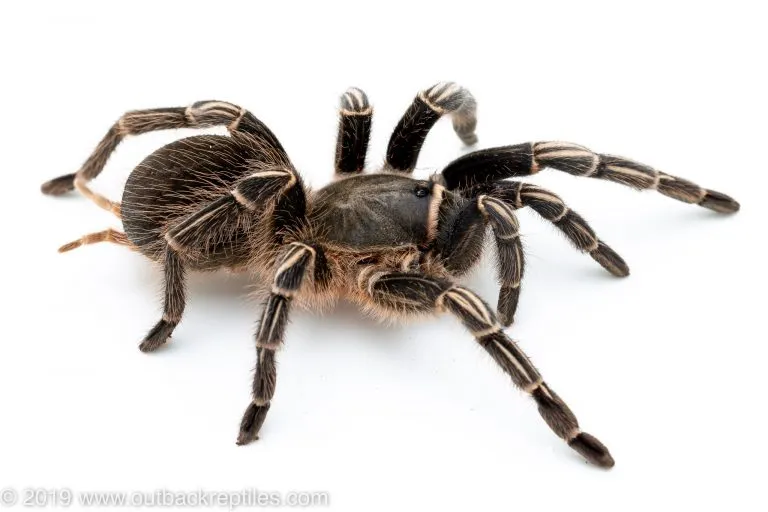
Just like any pet, Stripe Knee Tarantulas can experience health issues. Early detection and proper care are crucial for their well-being. By learning to recognize the signs of illness and understanding common problems, you can provide the best possible care. Regularly inspect your pet’s environment and behavior to ensure it is healthy and thriving.
Recognizing Signs of Illness
Several signs may indicate that your tarantula is not feeling well. These include loss of appetite, lethargy, unusual posture, and a swollen abdomen. A tarantula that is frequently on its back or seems unable to move may also be ill. If you observe any of these signs, consult with a veterinarian experienced in exotic animals as soon as possible. This will ensure your pet gets the proper treatment.
Common Health Problems
Common health problems include dehydration, parasitic infections (mites), and injuries sustained during molting. Maintain appropriate humidity and provide fresh water to prevent dehydration. Regularly inspect the enclosure for mites or other parasites. Be cautious and provide a safe and stable environment during the molting process. Proper nutrition and a clean environment are essential to minimize these risks. Consult with an expert if you are concerned about any health issue.
Conclusion
Caring for a Stripe Knee Tarantula can be a deeply rewarding experience. By following these top 5 care tips – focusing on the enclosure setup, feeding, watering, handling, and health – you can provide a suitable environment where your tarantula can thrive. Remember to research and learn as much as you can about tarantulas to provide the best care. Enjoy the unique experience of owning and observing this fascinating species. Your dedication to providing the right care will result in a healthy and captivating pet for years to come.
